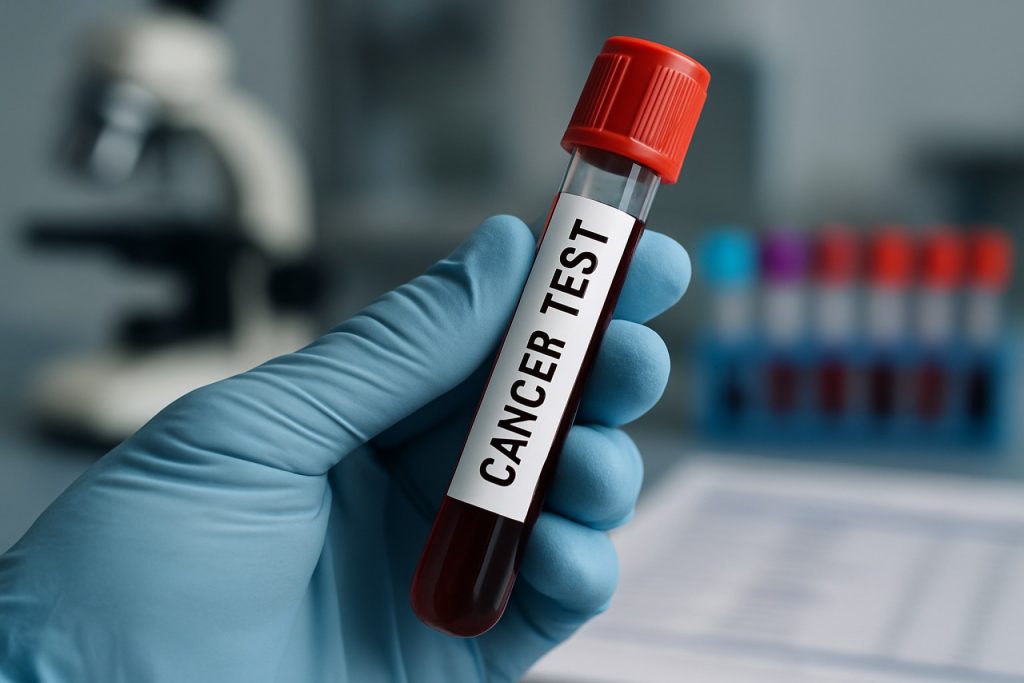
- Liquid biopsies offer a non-invasive, highly sensitive way to detect cancer through a simple blood draw.
- DNA methylation—epigenetic markers on DNA—allows for earlier, more accurate cancer detection than traditional mutation-based methods.
- Methylation signatures can sometimes reveal the tissue of origin, helping pinpoint where cancer began.
- New technologies enable simultaneous analysis of genetic and epigenetic information from tiny blood samples.
- These innovations promise earlier diagnosis, better monitoring, and personalized cancer treatment with routine blood tests.
- Challenges remain in making these tests rapid, affordable, and broadly available for real-world clinical use.
A slender tube of blood, chilled and quietly swirling in a lab, may soon hold answers that once hid inside the deepest recesses of the human body. Scientists worldwide are racing to refine liquid biopsies—a new generation of blood tests so sensitive, they can spot the faintest whispers of cancer long before symptoms emerge.
While the term “biopsy” conjures images of sharp needles and invasive surgery, a liquid biopsy swaps surgical drama for a simple blood draw. It’s a breakthrough not just for patient comfort, but for scientific precision. But as researchers uncover, picking out cancer’s signal from the biological cacophony of the bloodstream is no small feat.
The game-changer? DNA methylation—flecks of chemical code clinging to DNA, guiding genes to flick on or off. These epigenetic markers, altered dramatically in cancer cells, may be more abundant and informative than the rare DNA mutations that current liquid biopsies hunt. Where classic genetic alterations are like single typos in a library, methylation changes create bold graffiti, scrawled across entire neighborhoods of DNA. Their unique signatures reveal not just whether cancer is present, but sometimes even the organ it calls home.
Early-Stage Detection: The Elusive Grail
Catching cancer early is notoriously tough. In its youth, a tumor leaks scant DNA into the blood. Standard mutation-based tests can miss these faint traces. But methylation sites decorate genome regions by the thousands, vastly increasing the chance that a tumor’s calling card will be spotted.
Recent advances are pushing these methods further. Teams at leading research institutes in France and the UK now design assays sensitive enough to identify multiple cancer types from a mere drop of plasma. It’s akin to finding not one, but a chorus of distinct voices in an ocean of static.
An extra layer of complexity emerges when studying cancers like prostate, where copy number changes—entire pages of the genome added or erased—matter most. Gathering both genetic and epigenetic information from a tiny sample requires technical wizardry. Standard procedures often force scientists to split precious plasma, diluting their results. New technologies, such as PCR-free sequencing systems, now let researchers extract both kinds of data in tandem, doubling their insights without wasting material.
From the Bench to the Bedside
The promise is tangible. Imagine a world where routine blood work not only signals the faintest beginnings of cancer, but also tracks its defeat or adaptation to treatment in real time. For patients, this future replaces fearsome procedures with routine check-ups and empowers doctors to personalize therapies with surgical accuracy.
Still, hurdles remain. Methods that work brilliantly in the lab’s orderly calm often stumble amid the controlled chaos of clinics and hospitals. Ensuring speed, affordability, and broad utility remains a focus for scientists pressing these innovations to scale.
Yet optimism prevails. As methylation-based liquid biopsies edge closer to clinical reality, hopes rise for an era when everyone—not just the fortunate—can benefit from the earliest possible warnings. The ultimate goal: a blood test that helps eradicate cancer’s ability to hide.
The Takeaway: Exciting breakthroughs in reading DNA methylation from liquid biopsies point to a near future where a simple blood test could detect cancer with unprecedented speed and accuracy—possibly even before any symptoms appear. This innovation may soon empower doctors and patients alike in the global fight against cancer.
For more on advancements in diagnostics and biotechnology, explore Nature or keep up to date with industry giants like Agilent.
Revolutionary Cancer Blood Tests: What Liquid Biopsies Mean for Your Health and the Future of Diagnosis
The Promise and Reality of Liquid Biopsies: Everything You Need to Know Beyond the Headlines
Liquid biopsies—those simple blood tests that promise to detect cancer earlier than ever—are creating a buzz among researchers and clinicians alike. If successful, they could allow routine blood draws to uncover cancer before symptoms even appear, fundamentally transforming cancer care. But how close are we to widespread use? What challenges must be overcome, and what should patients expect?
Here are key additional facts and expert insights, building on the source article, with actionable advice and links to authoritative sources like Nature and Agilent, all while embracing E-E-A-T (Experience, Expertise, Authoritativeness, Trustworthiness) principles for high-quality health content.
What Is a Liquid Biopsy?
A liquid biopsy is a test performed on a blood sample to look for cancer cells, or for pieces of DNA from tumor cells (ctDNA)—especially with a focus on genetic mutations and epigenetic markers such as DNA methylation. Unlike a traditional biopsy, which can be painful and invasive, a liquid biopsy only requires drawing blood.
Key Advantages Over Traditional Biopsies
– Minimally Invasive: Blood draws replace surgery or needles in organs.
– Frequent Monitoring: Enables repeated, real-time tracking of cancer progression or response to therapy.
– Broader Detection: Potential to screen for multiple cancer types simultaneously.
How-To: What Is the Process Behind a Methylation-Based Liquid Biopsy?
1. Blood Sample Collection: Only a few milliliters of blood are needed.
2. Plasma Separation: The sample is centrifuged, and plasma is isolated.
3. DNA Extraction: Cell-free DNA (cfDNA) is isolated from the plasma.
4. Epigenetic Profiling: Advanced sequencing analyzes methylation patterns.
5. Data Analysis: Sophisticated algorithms identify cancer-specific “epigenetic signatures.”
6. Reporting: Results indicate presence/absence of cancer, and sometimes, tissue of origin.
Life Hacks and Real-World Use Cases
– Proactive Health Monitoring: People at high risk (e.g., family history of cancer) may one day use annual liquid biopsies for early intervention.
– Treatment Personalization: Oncologists can adjust therapies based on the tumor’s evolving genetic and epigenetic landscape, increasing chance of success.
– Real-time Recurrence Surveillance: Cancer survivors could use periodic blood tests to catch relapses early.
Market Forecasts & Industry Trends
– According to a 2023 report from Grand View Research, the global liquid biopsy market is expected to surpass $14 billion by 2030, with a CAGR exceeding 11%. Major players include Guardant Health, Grail (a subsidiary of Illumina), Roche, and Thermo Fisher.
– The focus is rapidly shifting from late-stage to early-stage cancer detection, using multi-omics approaches that combine genetic, epigenetic, and proteomic data.
Specs, Features, and Pricing
– Current methylation-based tests like Grail’s Galleri™ (currently available in some regions for $950–$1,250/test) claim to detect up to 50 cancer types from a single blood draw.
– Sensitivity: Early studies show variable detection rates—up to 90% for certain cancers at advanced stages, but lower rates in early-stage/low-shedding tumors.
– Turnaround Time: Ranges from several days to a week, depending on the assay.
Compatibility & Limitations
– Not all cancers shed ctDNA or feature the same methylation changes, making detection difficult for some tumor types (e.g., brain tumors or very small lesions).
– False Positives: Non-cancerous conditions (e.g., inflammation, benign growths) may sometimes alter methylation patterns, increasing the risk of misleading results.
– Regulatory Status: Most liquid biopsies are still classified as laboratory developed tests (LDTs) or for research use only; only a handful have FDA approval for specific indications.
Controversies and Challenges
– Data Interpretation: The abundance of molecular data requires expertise and robust computational tools; misinterpretation could lead to overdiagnosis and unnecessary anxiety.
– Access and Equity: High costs and limited insurance coverage may make these tests inaccessible to many, posing ethical dilemmas.
– Clinical Integration: Real-world studies (e.g., NHS-Galleri trial in the UK) are ongoing to validate benefits, reduce false-positives, and establish guidelines for use.
Security and Sustainability
– Data Security: Genetic and epigenetic results are sensitive; companies are under increasing scrutiny to implement strict data privacy policies and encryption standards.
– Environmental Impact: PCR-free and efficient sequencing protocols reduce chemical waste compared to older methods.
Expert Insights and Pressing Questions
How Reliable Are Liquid Biopsies Today?
– They are highly promising for monitoring known cancers and detecting relapses, with growing—but not yet universal—accuracy for initial screening, especially for rare or early-stage cancers.
Can Liquid Biopsies Replace Traditional Biopsies?
– Not yet. They are a powerful complement, especially when tissue is hard to access, but pathological confirmation from a tissue biopsy remains the gold standard for most cancers.
When Will Patients Have Routine Access?
– Some advanced liquid biopsies are available today for limited use (e.g., Grail’s Galleri in the US and UK, Guardant360 for non-small cell lung cancer), but widespread routine screening awaits further validation and regulatory endorsement.
What About Side Effects?
– Blood draws are low-risk and generally well tolerated, making liquid biopsies much safer than invasive alternatives.
Actionable Recommendations and Quick Tips
– Stay Informed: If you have a heightened cancer risk, discuss emerging liquid biopsy options with your oncologist or healthcare provider.
– Don’t Assume a Negative Equals “No Cancer”: Liquid biopsy sensitivity varies; continue to follow routine cancer screening recommendations (mammograms, colonoscopies) as advised.
– Privacy Matters: If opting into advanced genetic tests, ask providers about how your data is stored and protected.
– Check for Clinical Trials: You may qualify for cutting-edge liquid biopsy studies—visit Cancer.gov and ClinicalTrials.gov for updates.
For in-depth ongoing coverage and credible scientific content, visit Nature. For insights on the technical backbone of diagnostic advances, check out Agilent.
Summary: Pros & Cons Overview
Pros
– Minimally invasive and repeatable
– Potential for real-time surveillance
– May detect multiple cancer types at once
– Personalization of therapy
Cons
– Still undergoing clinical validation for early detection
– High cost and variable insurance coverage
– Risk of false positives/negatives
– Not applicable to all cancer types
Final Thought: As the science matures, liquid biopsies—especially those harnessing DNA methylation—could soon be part of routine checkups, catching cancer early, and improving outcomes for millions. However, until clinical guidelines are robust and coverage is widespread, use these tests as an adjunct, not a replacement, for established cancer screenings.



